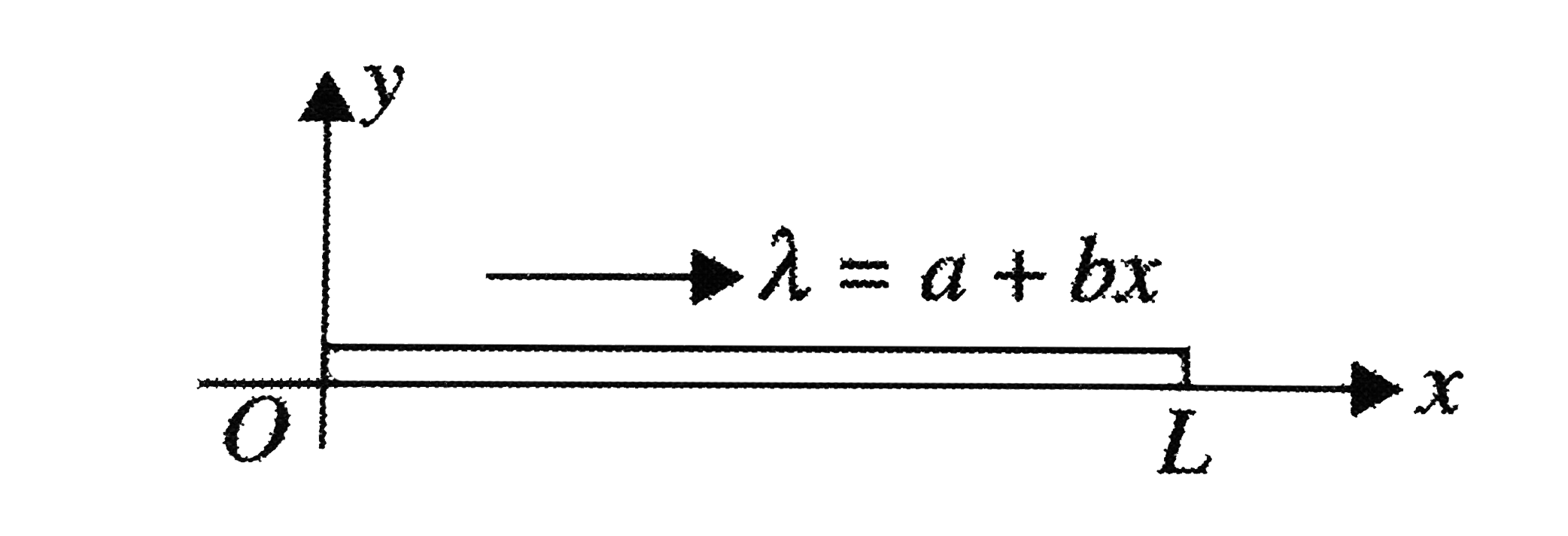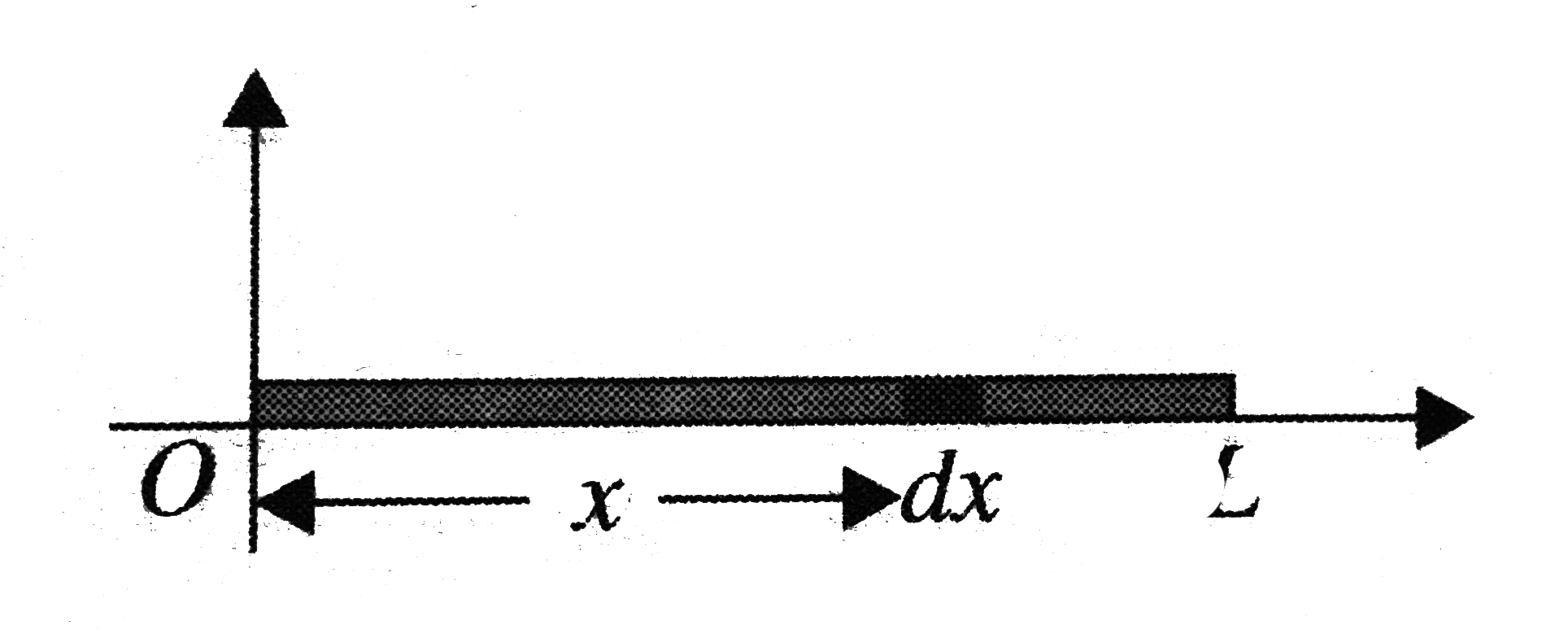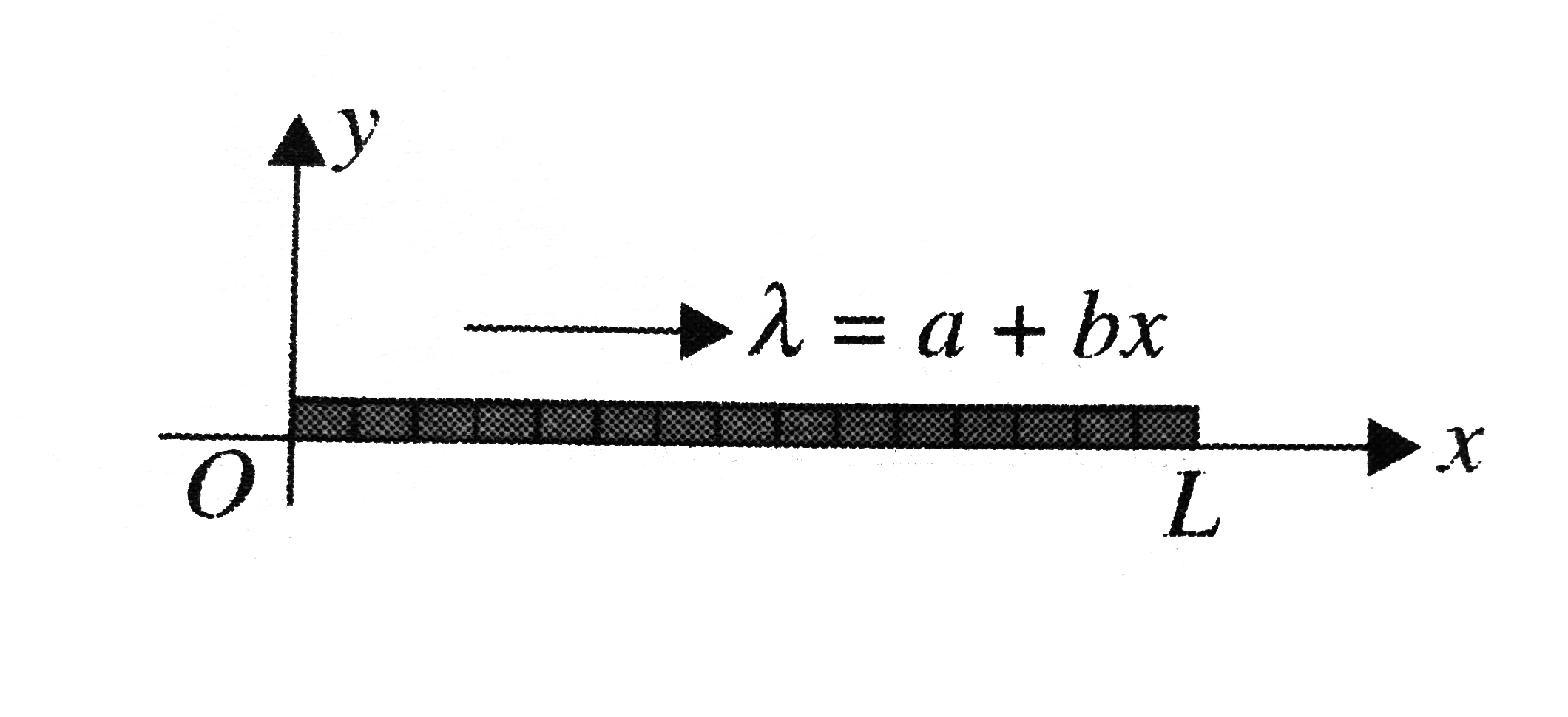You are given a rod of length L. The linear mass density is λ such that λ=a+bx. Here a and b are constants and the mass of the rod increases as x decreases. Find the mass of the rod

We are not calculated the mass of the rod simply multiplying linear mass density λ will the length of the rod as λ is not constant.

Hence, we have to divide entire rod length into a number of elements and add the mass of the elements.
M=dm1+dm2+dm3+...
This step can be written in terms of integration.
M=∫dm
If we take an element dx on the rod at a distance x from the left end of the rod.

Mass of this element dm=λ.dx
dm=(a+bx)dx
Hence, total mass,
M=∫dm=L∫0(a+bx)dx
=L∫0adx+L∫0bxdx
=aL∫0dx+bL∫0xdx
=a[x]L0+b[x22]L0=aL+bL22
Topper's Solved these Questions
- BASIC MATHEMATICSBOOK - CENGAGE PHYSICSCHAPTER - BASIC MATHEMATICSEXERCISE - Exercise 2.1
2 Videos
- BASIC MATHEMATICSBOOK - CENGAGE PHYSICSCHAPTER - BASIC MATHEMATICSEXERCISE - Exercise 2.2
3 Videos
- BASIC MATHEMATICSBOOK - CENGAGE PHYSICSCHAPTER - BASIC MATHEMATICSEXERCISE - Exercise 2.6
20 Videos
- ARCHIVES 2 VOLUME 6BOOK - CENGAGE PHYSICSCHAPTER - ARCHIVES 2 VOLUME 6EXERCISE - Integer
4 Videos
- CALORIMETRYBOOK - CENGAGE PHYSICSCHAPTER - CALORIMETRYEXERCISE - Solved Example
13 Videos
Similar Questions
A rod of length L is placed along the x-axis between x=0 and x=L. The linear mass density is λ such that λ=a+bx. Find the mass of the rod.
View SolutionFind the MI of a rod about an axis through its centre of mass and perpendicular to the length whose linear density varies as λ=ax where a is a constant and x is the position of an element of the rod relative to it's left end. The length of the rod l.
View Solution
Knowledge Check
The linear density of a non−uniform rod of length 2m is given by λ(x)=a(1+bx2) where a and b are constants and 0≤x≤2. The centre of mass of the rod will be at. X=
A3+6b6+8bB6+2b3+4bC3+6b3+4bD1+2b3+4bThe density of a non-uniform rod of length 1m is given by ρ(x)=a(1+bx2) where, a and b are constant and 0≤x≤1. The centre of mass of the rod will be at
A3(2+b)4(3b+b)B4(2+b)3(3+b)C3(3+b)4(2+b)D4(3+b)3(2b+b)The density of a non-uniform rod of length 1 m is given by ρ(x)=a(1+bx2) where a and b are constant and 0≤x≤1.
The centre of mass of the rod will beA3(2+b)4(3+b)B4(2+b)3(3+b)C3(3+b)4(2+b)D4(3+b)3(2+b)
Find coordinates of mass center of a non-uniform rod of length L whose linear mass density lambda varies as lambda=a+bx, where x is the distance from the lighter end.
View SolutionA rod of length L is placed along the x-axis between x=0 and x=L. The linear mass density (mass/length) ρ of the rod varies with the distance x from the origin as ρ=a+bx. Here, a and b are constants. Find the position of centre of mass of this rod.
View SolutionThe linear mass density lambda of a rod AB is given by λ=aplha+βxkgm taking O as origin. Find the location of the centre of mass from the end A?
View SolutionIf the linear density of a rod of length L varies as λ=A+Bx , find the position of its centre of mass .
View SolutionA non-uniform thin rod of length L is palced along X-axis so that one of its ends is at the origin. The linear mass density of rod is λ=λ0x. The centre of mass of rod divides the length of the rod in the ratio:
View Solution